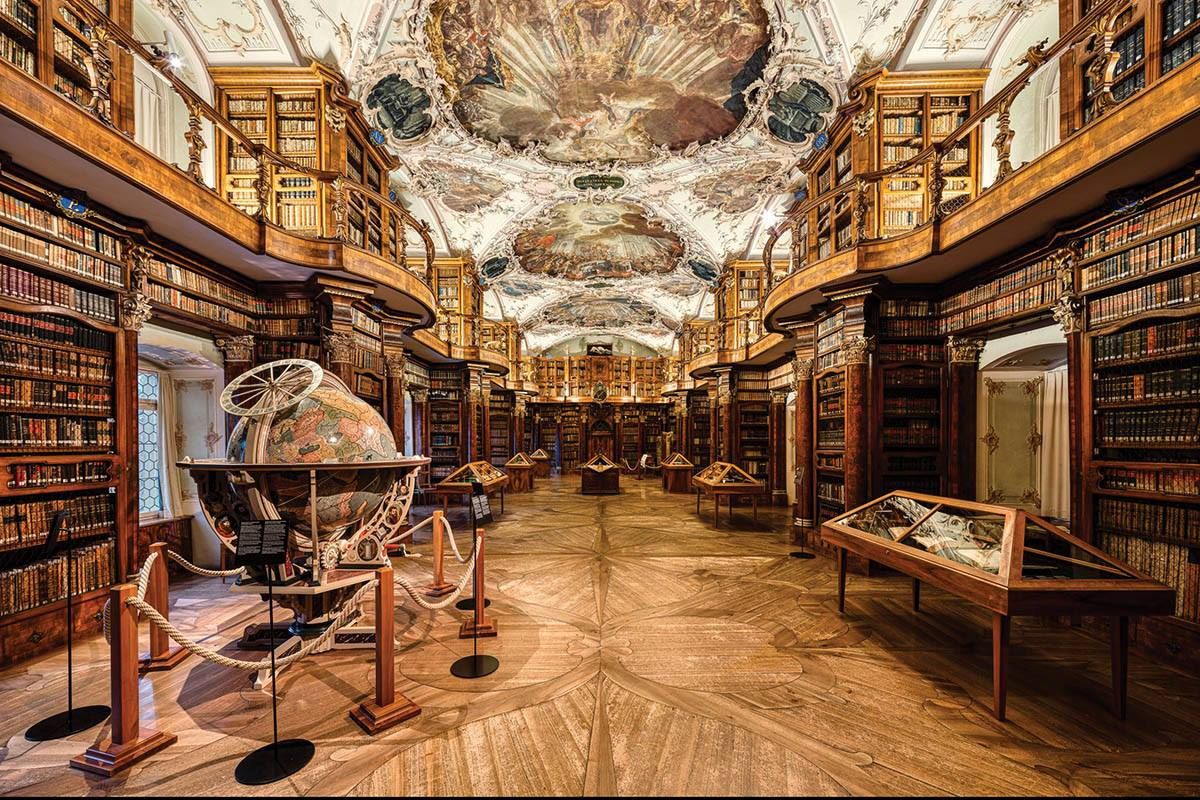
St. Gallen Abbey is a treasure trove of history and culture nestled in Switzerland. Ever wondered what makes this place so special? Founded in the 8th century, it has stood the test of time, becoming a UNESCO World Heritage site. The abbey boasts one of the world's oldest libraries, housing manuscripts that date back over a thousand years. Imagine walking through halls where monks once meticulously copied texts by hand! The architecture is a stunning blend of Baroque and Rococo styles, making it a visual feast. Curious about the secrets this ancient abbey holds? Let's dive into 26 fascinating facts that will transport you back in time.
Key Takeaways:
- St. Gallen Abbey: A Millennium of History and Influence Discover the rich history and cultural impact of St. Gallen Abbey, from its founding by Saint Othmar to its modern-day significance as a center of learning and artistic treasures.
- Architectural Marvels and Educational Legacy of St. Gallen Abbey Explore the stunning Baroque cathedral, ancient library, and influential abbey school, showcasing the architectural marvels and educational legacy of St. Gallen Abbey.
The Origins of St. Gallen Abbey
St. Gallen Abbey, located in Switzerland, has a rich history dating back over a millennium. Let's dive into some fascinating facts about this historic site.
-
Founded in 719 AD, the abbey was established by Saint Othmar on the site where Saint Gall had built his hermitage.
-
Saint Gall, an Irish monk, settled in the area around 612 AD, giving the abbey its name.
-
The abbey became a center of learning and culture during the Carolingian Renaissance, attracting scholars from across Europe.
-
Charlemagne, the Holy Roman Emperor, visited the abbey in the 8th century, recognizing its importance.
Architectural Marvels
The architecture of St. Gallen Abbey is a testament to its historical and cultural significance. Here are some key architectural highlights.
-
The Baroque cathedral, built between 1755 and 1768, is one of the most stunning examples of Baroque architecture in Switzerland.
-
The abbey library, one of the oldest in the world, houses over 170,000 volumes, including many rare manuscripts.
-
The library's Rococo hall, completed in 1767, is renowned for its ornate design and ceiling frescoes.
-
The Plan of St. Gall, a famous medieval architectural drawing, depicts an idealized monastic community and is preserved in the abbey library.
Cultural and Educational Impact
St. Gallen Abbey has played a significant role in the cultural and educational development of Europe. Let's explore some of its contributions.
-
The abbey school, established in the 8th century, became a leading center of education in medieval Europe.
-
Notable scholars, such as Notker Balbulus and Ekkehard IV, were associated with the abbey, contributing to its intellectual legacy.
-
The abbey's scriptorium produced numerous illuminated manuscripts, many of which are now considered masterpieces of medieval art.
-
The St. Gallen Symposium, an annual conference held at the abbey, brings together leaders from business, politics, and academia to discuss global issues.
Historical Events and Changes
Over the centuries, St. Gallen Abbey has witnessed numerous historical events and transformations. Here are some key moments.
-
The abbey was secularized in 1805 during the Napoleonic Wars, ending its religious function and transferring its assets to the state.
-
The abbey complex was declared a UNESCO World Heritage Site in 1983, recognizing its historical and cultural significance.
-
The abbey's archives contain a wealth of documents, including medieval charters, letters, and records that provide valuable insights into European history.
-
The abbey's role in the Reformation was complex, as it navigated the religious and political upheavals of the 16th century.
Artistic Treasures
St. Gallen Abbey is home to numerous artistic treasures that reflect its rich heritage. Let's take a closer look at some of these masterpieces.
-
The abbey's frescoes, created by renowned artists, adorn the ceilings and walls of the cathedral and library.
-
The choir stalls, intricately carved from wood, are a fine example of Baroque craftsmanship.
-
The abbey's organ, one of the largest in Switzerland, was built in the 18th century and is still in use today.
-
The abbey's collection of liturgical objects, including chalices, reliquaries, and vestments, showcases the artistry of medieval and Baroque goldsmiths.
Modern-Day Significance
Even today, St. Gallen Abbey continues to be a site of cultural and historical importance. Here are some ways it remains relevant.
-
The abbey library is open to researchers and the public, offering access to its vast collection of books and manuscripts.
-
The abbey complex hosts various cultural events, including concerts, exhibitions, and lectures, attracting visitors from around the world.
-
The St. Gallen Festival, held annually in the abbey's courtyard, features performances of classical music, opera, and theater.
-
The abbey's gardens, meticulously maintained, provide a serene setting for visitors to enjoy.
-
The abbey's influence extends to the University of St. Gallen, one of Europe's leading business schools, which continues the abbey's tradition of education and scholarship.
-
The abbey's legacy is celebrated in the local community, with numerous events and activities that highlight its historical and cultural contributions.
St. Gallen Abbey's Legacy
St. Gallen Abbey stands as a testament to history, culture, and architectural brilliance. Its library, one of the oldest in the world, houses countless manuscripts that offer a glimpse into medieval life. The abbey's Baroque architecture, with its intricate details and grand design, continues to awe visitors. Recognized as a UNESCO World Heritage site, it preserves a rich legacy that spans centuries. From its founding by Saint Gall to its role in the Carolingian Renaissance, the abbey has been a beacon of knowledge and spirituality. Visiting St. Gallen Abbey isn't just a trip to a historical site; it's a journey through time, offering insights into the past while inspiring the present. Whether you're a history buff, architecture enthusiast, or simply curious, St. Gallen Abbey promises a memorable experience. Its enduring legacy reminds us of the importance of preserving our cultural heritage.
Frequently Asked Questions
Was this page helpful?
Our commitment to delivering trustworthy and engaging content is at the heart of what we do. Each fact on our site is contributed by real users like you, bringing a wealth of diverse insights and information. To ensure the highest standards of accuracy and reliability, our dedicated editors meticulously review each submission. This process guarantees that the facts we share are not only fascinating but also credible. Trust in our commitment to quality and authenticity as you explore and learn with us.


